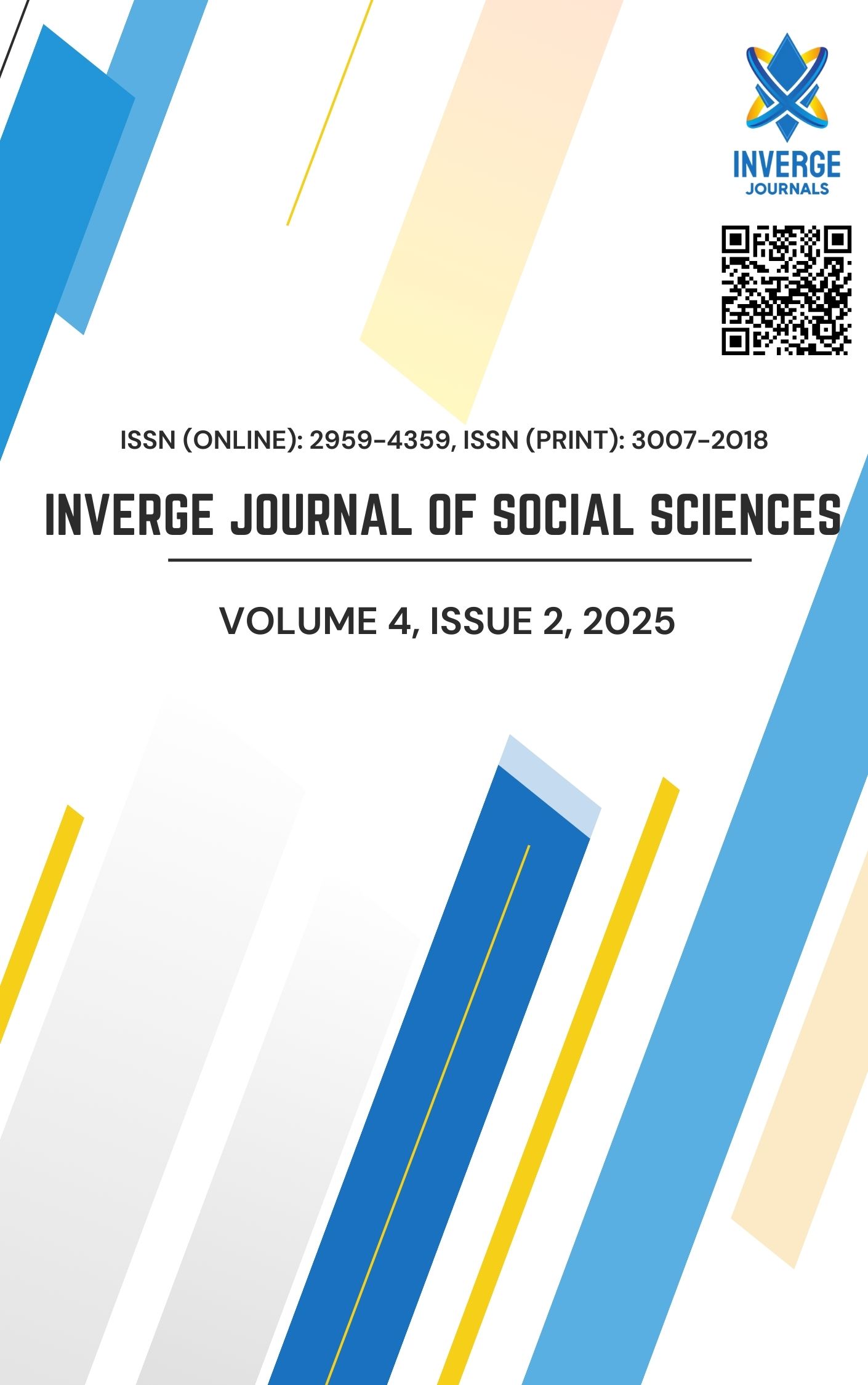Graphical Advance Organizers and Their Impact to Develop Higher Order Thinking Skills among Secondary Science School Students
DOI:
https://doi.org/10.63544/ijss.v4i2.124Keywords:
Graphical Advance Organizers (GAOs), Meaningful Learning (Ausubel’s Theory), Higher-Order Thinking Skills (HOTS), Science Education, Cognitive LoadAbstract
This study was conducted to find out the impact of graphical advance organizers on the development of higher order thinking skills among ninth grade biology students. Due to the increasing complexity of the scientific content, especially at secondary stage, there is a need for cognitive tools to develop the higher order thinking skills. Graphical advance organizers are the visual instructional tools presented before learning and are designed to bridge the gap between prior knowledge and the new content to make the learning more meaningful. This quasi-experimental research utilized a pre-test/post-test control group design involving 57 Grade 9 students in one urban public school; Government Girls High School Westridge No. 3, Rawalpindi (Pakistan). The experimental group (30 students) received instruction in biology using graphical advance organizers while the control group (27 students) was taught using conventional lecture-based methods without visual aids.
Data were collected using a validated analysis skill assessment tool specifically developed to measure students’ ability to interpret, compare, analyze, and evaluate biological information. The findings revealed that students exposed to graphical advance organizers demonstrated significantly higher gains in higher order thinking skills (analysis and evaluation) than those in the control group.
This study contributes to the growing body of literature on instructional strategies in science education and emphasizes the importance of incorporating graphical organizers in the secondary classrooms to promote analytical and evaluating skills. Recommendations are offered for educators, curriculum developers, and policymakers to embed visual learning tools at secondary level biology instruction to foster higher order thinking skills.
References
Ajaja, P. O. (2011). Effects of advance organizers on attainment and retention of students' concept of gravity in Nigeria. Mediterranean Journal of Social Sciences, 4(2), 743-752. https://doi.org/10.5901/mjss.2013.v4n2p743
Anderson, L. W., & Krathwohl, D. R. (Eds.). (2001). A taxonomy for learning, teaching, and assessing: A revision of Bloom's taxonomy of educational objectives. Longman.
Ausubel, D. P. (1963). The psychology of meaningful verbal learning. Grune & Stratton.
Ausubel, D. P. (1968). Educational psychology: A cognitive view. Holt, Rinehart & Winston.
Brookhart, S. M. (2013). How to assess higher-order thinking skills in your classroom. ASCD.
Bulut, D. (2022). Investigation of students' graphical and narrative type advance organizer use in an undergraduate course: A mixed method study [Master's thesis, Middle East Technical University].
Gambo, H. M., & Atomatofa, R. (2024). Effects of advance organizers on upper basic science students' achievement and retention in Giade Local Government, Bauchi State, Nigeria. ATBU Journal of Science, Technology and Education, 12(1), 45-56.
Gentz, K. L. (2013). Graphic organizers and their impact on higher-level secondary math students [Master's thesis, Minnesota State University].
Haladyna, T. M., & Downing, S. M. (2004). Handbook of test development. Lawrence Erlbaum Associates.
Hattie, J. (2009). *Visible learning: A synthesis of over 800 meta-analyses relating to achievement*. Routledge.
Horton, P. B., McConney, A. A., Gallo, M., Woods, A. L., Senn, G. J., & Hamelin, D. (1993). An investigation of the effectiveness of concept mapping as an instructional tool. Science Education, 77(1), 95-111. https://doi.org/10.1002/sce.3730770108
Kalyani, D., & Rajasekaran, K. (2018). Innovative teaching and learning. Journal of Applied and Advanced Research, 3(1), 23-25. https://doi.org/10.21839/jaar.2018.v3i1.162
Mehmood, N., Anwer, M., & Tatlah, A. (2017). Effect of combined teaching strategies on higher order thinking skills (HOTS) of biology students. Global Regional Review, 4(1), 312-319. https://doi.org/10.31703/grr.2019(IV-I).33
Nesbit, J. C., & Adesope, O. O. (2006). Learning with concept and knowledge maps: A meta-analysis. Review of Educational Research, 76(3), 413-448. https://doi.org/10.3102/00346543076003413
Novak, J. D. (1990). Concept maps and Vee diagrams: Two metacognitive tools to facilitate meaningful learning. Instructional Science, 19(1), 29-52. https://doi.org/10.1007/BF00377984
Novak, J. D., & Gowin, D. B. (1984). Learning how to learn. Cambridge University Press.
Safdar, M. (2012). Concept maps: An instructional tool to facilitate meaningful learning. European Journal of Educational Research, 1(1), 1-10.
Scott, L. C. (2015). The futures of learning 3: What kind of pedagogies for the 21st century? UNESCO Education Research and Foresight Working Papers, 15.
Shihusa, H., & Keraro, F. N. (2009). Using advance organizers to enhance students' motivation in learning biology. Eurasia Journal of Mathematics, Science and Technology Education, 5(4), 413-420. https://doi.org/10.12973/ejmste/75284
Sweller, J. (1988). Cognitive load during problem solving: Effects on learning. Cognitive Science, 12(2), 257-285. https://doi.org/10.1207/s15516709cog1202_4
Tenzin, S., Rai, R., & Gyeltshen, D. (2024). The effectiveness of graphic organizers in fostering the learning of chemical bonding in chemistry. Anatolian Journal of Education, 9(2), 43-54. https://doi.org/10.29333/aje.2024.924a
Uzomah, T. N., Achor, E., & Jack, G. U. (2023). Fostering students' academic achievement in physics through graphic organizer-enhanced learning strategy. Edukasiana: Jurnal Inovasi Pendidikan, 3(2), 1-10. https://doi.org/10.56916/ejip.v3i2.706
Vekiri, I. (2002). What is the value of graphical displays in learning? Educational Psychology Review, 14(3), 261-312. https://doi.org/10.1023/A:1016064429161
Yuliati, S. R., & Lestari, I. (2018). Higher-order thinking skills (HOTS) analysis of students in solving HOTS question in higher education. Perspektif Ilmu Pendidikan, 32(2), 181-188. https://doi.org/10.21009/PIP.322.10
Downloads
Published
How to Cite
Issue
Section
Categories
License
Copyright (c) 2025 Sadia Gulzar

This work is licensed under a Creative Commons Attribution-NonCommercial-ShareAlike 4.0 International License.
The work is concurrently licensed under a Creative Commons Attribution-NonCommercial-ShareAlike 4.0 International License, which permits others to share the work with an acknowledgement of the authorship and the work's original publication in this journal, while the authors retain copyright and grant the journal the right of first publication.









